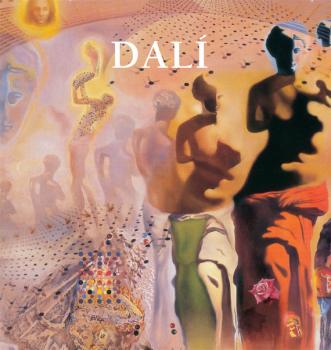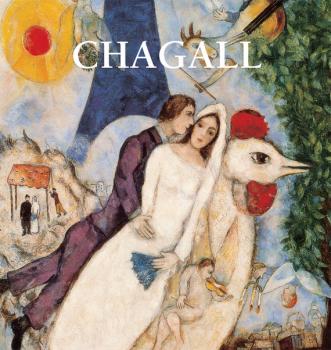Изобразительное искусство, фотография
Различные книги в жанре Изобразительное искусство, фотографияGauguin
Paul Gauguin was first a sailor, then a successful stockbroker in Paris. In 1874 he began to paint at weekends as a Sunday painter. Nine years later, after a stock-market crash, he felt confident of his ability to earn a living for his family by painting and he resigned his position and took up the painter’s brush full time. Following the lead of Cézanne, Gauguin painted still-lifes from the very beginning of his artistic career. He even owned a still-life by Cézanne, which is shown in Gauguin’s painting Portrait of Marie Lagadu. The year 1891 was crucial for Gauguin. In that year he left France for Tahiti, where he stayed till 1893. This stay in Tahiti determined his future life and career, for in 1895, after a sojourn in France, he returned there for good. In Tahiti, Gauguin discovered primitive art, with its flat forms and violent colours, belonging to an untamed nature. With absolute sincerity, he transferred them onto his canvas. His paintings from then on reflected this style: a radical simplification of drawing; brilliant, pure, bright colours; an ornamental type composition; and a deliberate flatness of planes. Gauguin termed this style “synthetic symbolism”.
Dalí
Painter, designer, creator of bizarre objects, author and film maker, Dalí became the most famous of the Surrealists. Buñuel, Lorca, Picasso and Breton all had a great influence on his career. Dalí's film, An Andalusian Dog, produced with Buñuel, marked his official entry into the tightly-knit group of Parisian Surrealists, where he met Gala, the woman who became his lifelong companion and his source of inspiration. But his relationship soon deteriorated until his final rift with André Breton in 1939. Nevertheless Dalí's art remained surrealist in its philosophy and expression and a prime example of his freshness, humour and exploration of the subconscious mind. Throughout his life, Dalí was a genius at self-promotion, creating and maintaining his reputation as a mythical figure.
Chagall
Marc Chagall was born into a strict Jewish family for whom the ban on representations of the human figure had the weight of dogma. A failure in the entrance examination for the Stieglitz School did not stop Chagall from later joining that famous school founded by the Imperial Society for the Encouragement of the Arts and directed by Nicholas Roerich. Chagall moved to Paris in 1910. The city was his “second Vitebsk”. At first, isolated in the little room on the Impasse du Maine at La Ruche, Chagall soon found numerous compatriots also attracted by the prestige of Paris: Lipchitz, Zadkine, Archipenko and Soutine, all of whom were to maintain the “smell” of his native land. From his very arrival Chagall wanted to “discover everything”. And to his dazzled eyes painting did indeed reveal itself. Even the most attentive and partial observer is at times unable to distinguish the “Parisian”, Chagall from the “Vitebskian”. The artist was not full of contradictions, nor was he a split personality, but he always remained different; he looked around and within himself and at the surrounding world, and he used his present thoughts and recollections. He had an utterly poetical mode of thought that enabled him to pursue such a complex course. Chagall was endowed with a sort of stylistic immunity: he enriched himself without destroying anything of his own inner structure. Admiring the works of others he studied them ingenuously, ridding himself of his youthful awkwardness, yet never losing his authenticity for a moment. At times Chagall seemed to look at the world through magic crystal – overloaded with artistic experimentation – of the Ecole de Paris. In such cases he would embark on a subtle and serious play with the various discoveries of the turn of the century and turned his prophetic gaze like that of a biblical youth, to look at himself ironically and thoughtfully in the mirror. Naturally, it totally and uneclectically reflected the painterly discoveries of Cézanne, the delicate inspiration of Modigliani, and the complex surface rhythms recalling the experiments of the early Cubists (See-Portrait at the Easel, 1914). Despite the analyses which nowadays illuminate the painter’s Judaeo-Russian sources, inherited or borrowed but always sublime, and his formal relationships, there is always some share of mystery in Chagall’s art. The mystery perhaps lies in the very nature of his art, in which he uses his experiences and memories. Painting truly is life, and perhaps life is painting.
Cézanne
Since his death 200 years ago, Cézanne has become the most famous painter of the nineteenth century. He was born in Aix-en-Provence in 1839 and the happiest period of his life was his early youth in Provence, in company with Emile Zolá, another Italian. Following Zolá’s example, Cézanne went to Paris in his twenty-first year. During the Franco-Prussian war he deserted the military, dividing his time between open-air painting and the studio. He said to Vollard, an art dealer, “I’m only a painter. Parisian wit gives me a pain. Painting nudes on the banks of the Arc [a river near Aix] is all I could ask for.” Encouraged by Renoir, one of the first to appreciate him, he exhibited with the impressionists in 1874 and in 1877. He was received with derision, which deeply hurt him. Cézanne’s ambition, in his own words, was “to make out of Impressionism something as solid and durable as the paintings of the museums.” His aim was to achieve the monumental in a modern language of glowing, vibrating tones. Cézanne wanted to retain the natural colour of an object and to harmonise it with the various influences of light and shade trying to destroy it; to work out a scale of tones expressing the mass and character of the form. Cézanne loved to paint fruit because it afforded him obedient models and he was a slow worker. He did not intend to simply copy an apple. He kept the dominant colour and the character of the fruit, but heightened the emotional appeal of the form by a scheme of rich and concordant tones. In his paintings of still-life he is a master. His fruit and vegetable compositions are truly dramatic; they have the weight, the nobility, the style of immortal forms. No other painter ever brought to a red apple a conviction so heated, sympathy so genuinely spiritual, or an observation so protracted. No other painter of equal ability ever reserved for still-life his strongest impulses. Cézanne restored to painting the pre-eminence of knowledge, the most essential quality to all creative effort. The death of his father in 1886 made him a rich man, but he made no change in his abstemious mode of living. Soon afterwards, Cézanne retired permanently to his estate in Provence. He was probably the loneliest of painters of his day. At times a curious melancholy attacked him, a black hopelessness. He grew more savage and exacting, destroying canvases, throwing them out of his studio into the trees, abandoning them in the fields, and giving them to his son to cut into puzzles, or to the people of Aix. At the beginning of the century, when Vollard arrived in Provence with intentions of buying on speculation all the Cézannes he could get hold of, the peasantry, hearing that a fool from Paris was actually handing out money for old linen, produced from barns a considerable number of still-lifes and landscapes. The old master of Aix was overcome with joy, but recognition came too late. In 1906 he died from a fever contracted while painting in a downpour of rain.
Импрессионизм
В этом издании собраны лучшие картины импрессионистов, в том числе полотна периода становления стиля и произведения постимпрессионизма, во всем многообразии жанров живописи одного из главных направлений в искусстве XIX-XX веков. Каждую картину сопровождает рассказ о творческой манере автора, любопытные инциденты, сопутствующие истории ее создания и название музея, где вы можете ее увидеть.
О фотографии
Коллекция эссе Сьюзен Сонтаг «О фотографии» впервые увидела свет в виде серии очерков, опубликованных в New York Review of Books между 1973 и 1977 годами. В книге, сделавшей ее знаменитой, Сонтаг приходит к выводу, что широкое распространение фотографии приводит к установлению между человеком и миром отношений «хронического вуайеризма», в результате чего все происходящее начинает располагаться на одном уровне и приобретает одинаковый смысл. Главный парадокс фотографии заключается, согласно Сонтаг, в том, что человек, который снимает, не может вмешаться в происходящее, и, наоборот, – если он участвует в событии, то оказывается уже не в состоянии зафиксировать его в виде фотоизображения.
Как фотографировать людей
Фотографировать людей – одна из самых востребованных задач в современной журнальной и рекламной фотографии и одна из самых сложных, поскольку нет четких правил съемки. Автор этого справочника для начинающих фотографов-портретистов дает очень подробные описания самых первых шагов в фотографии, полезные рекомендации в вопросах выбора техники, а также выделяет технические аспекты, важные именно для портретной съемки, такие как баланс белого и глубина резкости. Что касается непосредственно самой съемки портрета, автор останавливается на всех возможных ситуациях, в которых мы фотографируем людей: от простых портретов и свадебной съемки до театральных постановок и спортивных мероприятий, – и подробно разбирает каждый случай, с детальным описанием всех технических сложностей, не забывая при этом о таких важных вещах, как, например, композиция. Также Мариам Акопян большое внимание уделяет психологическим аспектам фотографирования портрета. Здесь есть советы, как подготовить модель к съемке и как нужно управлять съемочным процессом, чтобы фотографии получились как можно более естественными. Все главы снабжены практическими заданиями.
Как фотографировать в путешествиях
«Чтобы привезти из путешествия хорошие фотографии, недостаточно взять с собой фотоаппарат, – утверждает автор книги Мариам Акопян. – Нужно научиться видеть то, что не замечают другие. Тогда просмотр ваших снимков перестанет быть для ваших друзей лишь данью вежливости (а порой даже скучной обязанностью) и превратится в увлекательное виртуальное путешествие». Эта книга расскажет: • как наилучшим образом подготовиться к фотопутешествию; • как делать снимки – «не такие, как у всех»; • как получить отличные фотографии с помощью непрофессионального фотоаппарата; • как снимать архитектуру, пейзажи, еду – словом, все, что привлекает наше внимание в путешествии; • как хранить и обрабатывать фотографии. С этой книгой ваши путешествия уже не будут просто отдыхом. Они наполнятся творчеством.
Искусство фотографии: сила композиции
Одно из ключевых понятий в фотографии – композиция: искусство творческого расположения компонентов в кадре, умение увидеть будущий снимок глазами зрителя. Благодаря этой книге, написанной под редакцией известного фотографа Лори Эксель, вы освоите основы композиции и поймете влияние на результат таких аспектов, как цвет, свет, форма и контраст. Вы узнаете, почему понимание света и экспозиции является одной из основных задач на пути к созданию удачных снимков, разберетесь, что такое экспозиционная триада и как диафрагма, выдержка и светочувствительность соотносятся друг с другом. Также в книге рассказывается, как использовать ведущие и прямые линии, S-образные кривые, формы и паттерны, чтобы направлять взгляд зрителя непосредственно к объекту. Обсуждается цвет, использование сопряженных и контрастных цветов и эмоциональное воздействие, которое оказывает на зрителя сочетание разных оттенков. Кроме того, рассмотрены пространственные отношения объектов, расположение линии горизонта, горизонтальный и вертикальный форматы, ракурс и многое другое. Красочно оформленная, с большим количеством ярких и впечатляющих фотографий, эта книга научит вас создавать маленькие шедевры каждый раз, когда вы берете в руки свою фотокамеру.
Обнаженная натура
Фотография ню – это искусство на грани. Она должна не просто вызвать желание, но зацепить красотой линий тела, построением кадра, игрой света и тени, оригинальной идеей. Альбом молодого фотографа Вадима Нардина – это изящное сочетание эротических фантазий, красивых женщин и неординарных задумок. Именно то, что не стыдно подарить знакомому или положить на свой журнальный столик в гостиной. Отличная книга для ценителей прекрасного.









